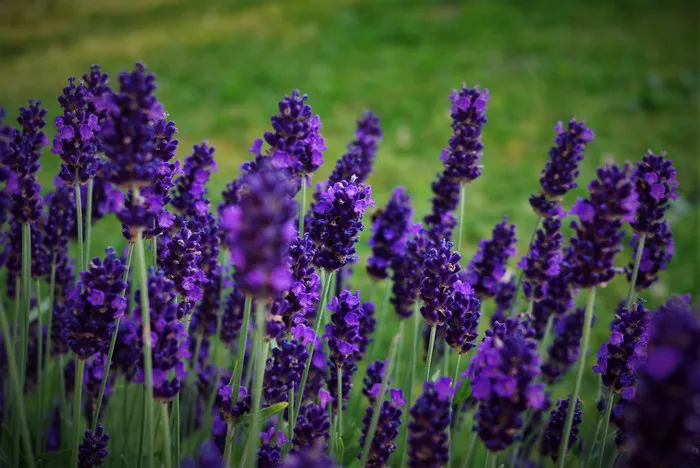In the realm of gardening, perennial flowers stand out as enduring favorites, offering a spectrum of colors, shapes, and fragrances that grace gardens year after year. Unlike their annual counterparts, which complete their life cycle in a single growing season, perennial flowers return each year, delighting gardeners with their resilience and reliability. This comprehensive guide delves into the captivating world of perennial flowers, exploring their types, characteristics, and cultivation tips to help both novice and seasoned gardeners create vibrant and long-lasting garden spaces.
Understanding Perennial Flowers
Perennial flowers, the backbone of many gardens, encompass a diverse array of plant species that thrive in various climates and growing conditions. Unlike annuals, which typically require replanting each year, perennials persist for multiple growing seasons, often increasing in size and vigor over time. This enduring nature stems from their ability to survive unfavorable conditions by storing energy in their roots and crowns during dormant periods, only to burst forth with renewed vigor when conditions improve.
Types of Perennial Flowers
Perennial flowers span a wide spectrum of species, each with its own unique characteristics and growing requirements. From sun-loving stalwarts to shade-dwelling gems, there’s a perennial flower to suit every garden’s needs. Here are some popular types of perennial flowers categorized based on their growing habits and preferred conditions:
1. Sun-Loving Perennials:
Coneflowers (Echinacea spp.): Known for their daisy-like flowers and drought tolerance, coneflowers add a burst of color to sunny borders and pollinator gardens.
Black-Eyed Susans (Rudbeckia spp.): With their cheerful yellow blooms and tolerance for poor soil, black-eyed Susans thrive in full sun and attract butterflies and bees.
Lavender (Lavandula spp.): prized for their aromatic foliage and vibrant purple flowers, lavender thrives in sunny, well-drained locations, making them ideal for Mediterranean-inspired gardens.
2. Shade-Loving Perennials:
Hostas (Hosta spp.): prized for their lush foliage and tolerance for shade, hostas are a staple in shade gardens, where their variegated leaves add texture and color.
Astilbes (Astilbe spp.): prized for their feathery plumes of flowers and ability to thrive in moist, shady conditions, astilbes are a popular choice for woodland gardens and shady borders.
Bleeding Hearts (Dicentra spp.): With their heart-shaped flowers and fern-like foliage, bleeding hearts thrive in partial to full shade, adding a touch of whimsy to shaded garden spaces.
3. Perennial Vines:
Clematis (Clematis spp.): prized for their showy flowers and climbing habit, clematis are a versatile addition to gardens, where they can be trained to climb trellises, arbors, and fences.
Honeysuckle (Lonicera spp.): prized for their fragrant flowers and ability to attract hummingbirds, honeysuckles are a charming addition to sunny garden spaces, where they can scramble over fences and pergolas.
Climbing Roses (Rosa spp.): prized for their exquisite blooms and romantic charm, climbing roses add vertical interest to gardens, where they can be trained to climb walls, arches, and trellises.
Cultivating Perennial Flowers
While perennial flowers are renowned for their resilience and longevity, they still require proper care to thrive and flourish. Here are some essential tips for cultivating perennial flowers and ensuring their success in the garden:
1. Site Selection:
Choose a location that provides the appropriate light conditions for the specific type of perennial flower you’re growing. Sun-loving perennials require full sun (6-8 hours of direct sunlight per day), while shade-loving perennials thrive in partial to full shade.
Ensure the soil is well-drained to prevent waterlogging, which can lead to root rot and other moisture-related issues. Incorporate organic matter, such as compost or aged manure, into the soil to improve its texture and fertility.
2. Planting:
Plant perennial flowers at the appropriate depth and spacing, following the guidelines provided for each specific species. Avoid planting too deeply, as this can inhibit root growth and lead to poor establishment.
Water newly planted perennials thoroughly to help them settle into their new surroundings and establish healthy root systems. Provide supplemental water as needed, especially during periods of drought or hot weather.
3. Mulching:
Apply a layer of organic mulch, such as shredded bark or straw, around perennial plants to help conserve soil moisture, suppress weeds, and moderate soil temperature. Keep the mulch layer thin (2-3 inches) and avoid piling it up against the plant stems, as this can promote disease and pest problems.
4. Fertilizing:
Feed perennial flowers with a balanced fertilizer or a formulation specifically designed for flowering plants to promote healthy growth and abundant blooms. Follow the manufacturer’s recommendations for application rates and timing, and avoid over-fertilizing, which can lead to excessive foliage growth at the expense of flowers.
5. Deadheading and Pruning:
Remove spent flowers (deadheading) regularly to encourage continuous blooming and prevent the formation of seed heads, which can divert energy away from flower production. Prune perennial plants as needed to remove dead or damaged growth, improve air circulation, and maintain desired shape and size.
6. Dividing and Transplanting:
Divide overcrowded perennial clumps every few years to rejuvenate the plants, promote better air circulation, and prevent competition for resources. Transplant perennial flowers in early spring or fall when they are dormant to minimize transplant shock and maximize success.
Conclusion
Perennial flowers hold a special place in the hearts of gardeners worldwide, offering beauty, resilience, and longevity that few other plants can match. From sun-drenched borders to shady woodland retreats, there’s a perennial flower for every garden style and growing condition. By understanding the different types of perennial flowers and their unique requirements, gardeners can create vibrant and enduring garden spaces that delight the senses year after year. So whether you’re a seasoned gardener or just starting out, consider adding some perennial magic to your garden and watch as it blossoms and thrives for seasons to come.


